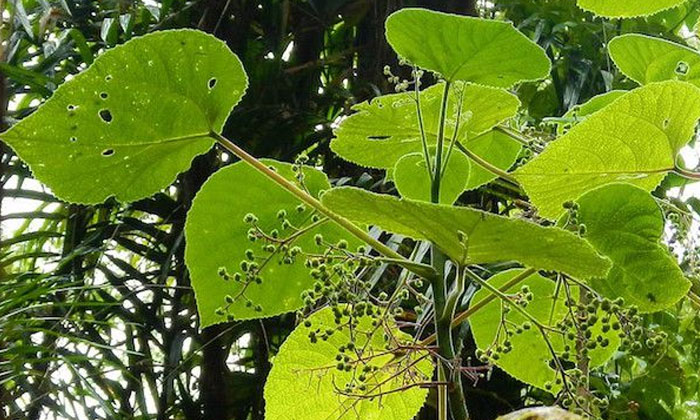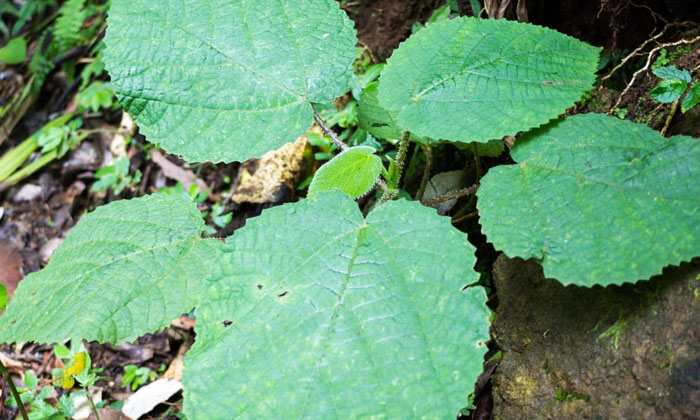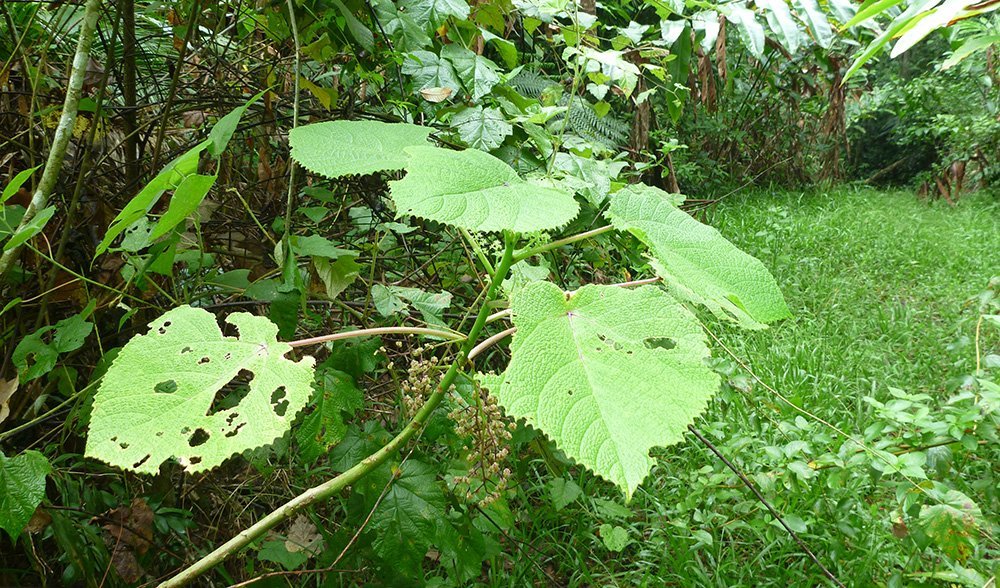Dendrocnide macrolide is a plant with a sting that can last for days. The pain has been described as being similar to the pain of a bee sting but ten times more potent. It is also widely known as the “suicide plant” because it can cause extreme pain and discomfort if touched. This article by usuncut will explore how Dendrocnide Moroides works and why it’s so dangerous.
Gympie’s Description

Dendrocnide macrolides is a species in the family Urticaceae, native to tropical and subtropical Asia from India east to China and Malaysia. In English, it may be variously called stinging nettle, Gympie Gympie, or simply “Gympie,” but this applies to several other plants of the genus Dendrocnide. It is also known as a suicide plant because it can cause severe pain lasting days if touched.
Appearance

Dendrocnide macrolides are a thin shrub, usually reaching heights of only 0.75 meters (30 inches). It has small deciduous leaves that are about 15 centimeters long by five wide and elliptic in shape. The thin branches on the shrubs can be either green or red at maturity, depending on subspecies. It grows tiny flowers during its fruit season, later leading to drupes with one seed each.
Origin

Dendrocnide Moroides originates from Southeast Asia, but now it’s spread all over tropical regions and subtropical areas worldwide due to human activities such as farming and gardening. These plants have been introduced into new territories much more like humans themselves.
Nucleic Acid

Dendrocnide macrolides contain chemicals called triterpene glycosides, which in this case is an active compound with poison-producing properties. These compounds come from the chemical makeup of Dendrocnide Moroides. When humans or animals touch these plants, they release a toxin known as acetylcholine into their system through either skin contact or ingestion.
Toxicity

It’s been described as being similar to the pain of a bee sting but ten times more potent. The toxin causes an intense and painful stinging sensation which can last for days if not properly treated. It has also been known to cause muscle spasms, vomiting, loss of coordination, and respiratory paralysis in severe cases.
Dendrocnide Moroides are found around most tropical countries, including Southeast Asia and Australia. It grows wild near moist areas with heavy rainfall or high humidity levels such as forests and rainforests by rivers banks throughout its natural habitat range. Dendrocnide macrolides contain triterpenoid glycosides that produce poison when touched by humans or animals, releasing acetylcholine into the system through skin contact or ingestion.
Acetylcholine’s Role In The Suicide Plant

Acetylcholine’s Role Acetylcholine is responsible for sending signals to muscles throughout your body, including those in your heart (cardiovascular) and gut (digestive). When someone touches one of these plants, it causes the sting associated with touching because once our nerve endings make contact with the plant, it causes a release of acetylcholine. Once this chemical is released into our system, we experience pain, discomfort, and cardiovascular symptoms such as nausea, vomiting, abdominal cramps, and diarrhea.
Commonly Found Location

Gympie gets its name from an Australian town with one of the highest concentrations of Dendrocnide macrolides on earth, around 400 plants per hectare (100/acre). It’s also known to be found in Papua New Guinea, Indonesia, Malaysia, Thailand, Burma, Vietnam, Laos, Sri Lanka, Cambodia, Japan, Philippines, India China Singapore Solomon Islands Fiji Cook Islands Niue Pitcairn Island French Polynesia Tokelau Samoa Wallis Futuna Liberia Madagascar Mauritius Seychelles and some parts of North America.
Symptoms And Treatment

The symptoms associated with the stinging plant include a burning sensation, rash, itchiness, and pain that can last for several days. There is no treatment necessary if you’re only exposed to Dendrocnide Moroides once because your body will rid itself of its toxins in most cases after 24 hours.
However, children are more susceptible than adults to these chemicals, so they should be treated right away, especially if they have been exposed multiple times or have caused them to become ill. If this happens, then medical attention must be sought out immediately before it gets too late. T
he best thing one does when coming into contact with this plant is to remove the hairs from your skin as quickly and safely as possible. If you do this, there’s a good chance that the pain will dissipate after about two hours, but it could cause increased discomfort if left on too long.
Prevention And Treatment In Animals

In animals such as cows or horses, touching Dendrocnide macrolides can be fatal because of their size, which allows them to absorb more toxins than humans.
In Australia, there are several cases where horses have been poisoned by eating small bunches of these plants when they were turned out into pastures containing them for grazing purposes. Because horses weigh anywhere between 500-700 kilograms (110-1500 pounds), they pose a greater risk when coming into contact with Dendrocnide macrolides because of their ingestion method.
What About My Pet

If your pet comes into contact or eats this plant for whatever reason, you should seek out the help of a veterinarian immediately so that they can treat it accordingly. Do not attempt to do anything on your own because if their body absorbs too much acetylcholine, then there’s a good chance that it will die from an overdose, which is what makes these plants so dangerous to begin with. In small doses, however, the toxin only causes discomfort and, in most cases, nothing else when appropriately handled by humans or animals alike.
Conclusion

Dendrocnide macrolides, also known as Gympie-Gympie stinging trees, are one of the most dangerous plants in the world. If touched, it can cause severe pain lasting for days and some cardiovascular symptoms such as nausea, vomiting, abdominal cramps, and diarrhea. However, there are no recorded cases of this plant being fatal to humans because our bodies have a natural resistance that protects us from its effects when exposed just once.
However, if you contact these hairs multiple times or if your exposure has caused you to become ill, then medical attention must be sought immediately before it gets too late! And lastly, always remember Dendrocnide macrolides “The suicide plant” are highly venomous, so please take caution next time you go hiking through the woods!




